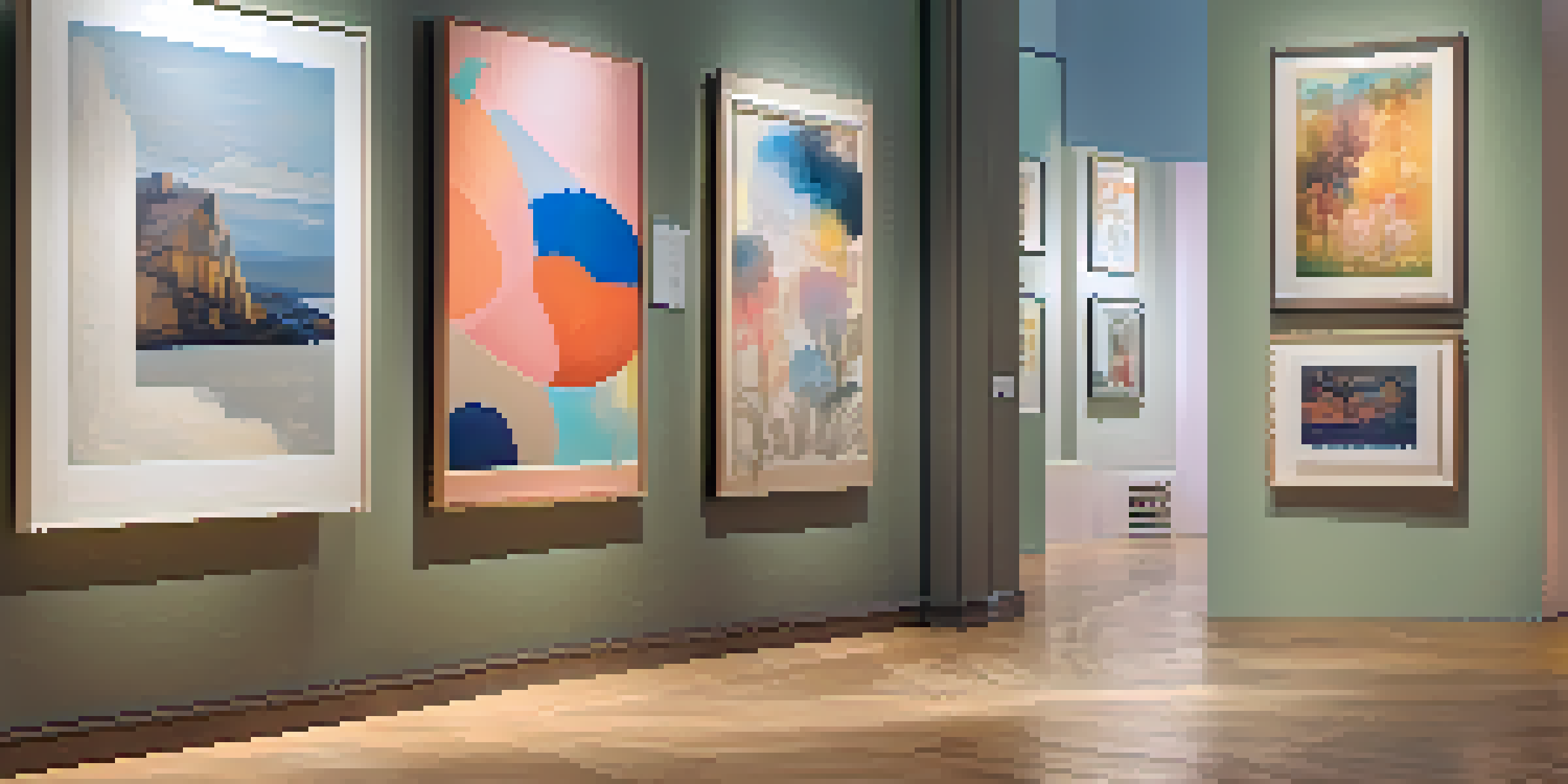The Role of Gender in Art Criticism: A Historical Overview

Understanding Art Criticism and Its Foundations
Art criticism involves analyzing and evaluating artworks, providing context and meaning. It has evolved through various movements and social changes, reflecting broader cultural attitudes. Understanding its foundations helps us appreciate how gender influences the conversation around art.
The Gender Divide in Historical Art Narratives
Historically, art narratives have often favored male perspectives, overshadowing women's contributions. This gender divide has shaped the way art is critiqued and valued, leading to a limited understanding of artistic merit. Recognizing this bias is crucial for a more inclusive appreciation of art history.
Gender Bias in Art History
Historical art narratives have often favored male perspectives, highlighting the need for a more inclusive understanding of women’s contributions.
Early Feminist Critique and Its Impact
The rise of feminist art criticism in the late 20th century challenged the traditional male-centric narratives. Feminist critics sought to highlight women's experiences and contributions in art, pushing for a reevaluation of what constitutes 'great' art. This movement opened doors for a more diverse range of voices in art criticism.
The Role of Women in Contemporary Art Criticism
Today, women play a significant role in shaping contemporary art criticism, offering fresh perspectives and insights. Their involvement has led to a broader discussion about the intersection of gender, identity, and art. This shift enriches the art world, making it more reflective of diverse experiences.
Feminist Critique Reshapes Art
Feminist art criticism has challenged traditional narratives, promoting a reevaluation of what constitutes 'great' art and amplifying diverse voices.
Intersectionality: Expanding the Conversation
Intersectionality examines how various social identities, like race and class, intersect with gender. This concept has become increasingly important in art criticism, allowing for a richer understanding of both artists and their audiences. By acknowledging these intersections, critics can provide a more nuanced analysis of artworks.
Challenges Faced by Gendered Voices in Criticism
Despite advancements, gendered voices in art criticism continue to face challenges, such as bias and underrepresentation. Many female and non-binary critics still struggle for recognition in a predominantly male field. Addressing these challenges is essential for creating an equitable art world.
Social Media's Role in Critique
Social media has democratized art criticism, allowing marginalized voices to share their perspectives and fostering richer discussions around art and gender.
The Influence of Social Media on Art Criticism
Social media has transformed how art is critiqued and discussed, providing platforms for diverse voices. Women and marginalized groups can now share their perspectives more widely, challenging traditional gatekeepers of art criticism. This democratization fosters a richer dialogue around art and gender.
Looking Ahead: The Future of Gender in Art Criticism
As we move forward, it's vital to continue advocating for diverse perspectives in art criticism. The future will likely see a further blending of gender, race, and identity in critiques, enriching our understanding of art. Embracing these changes can lead to a more inclusive and vibrant art community.